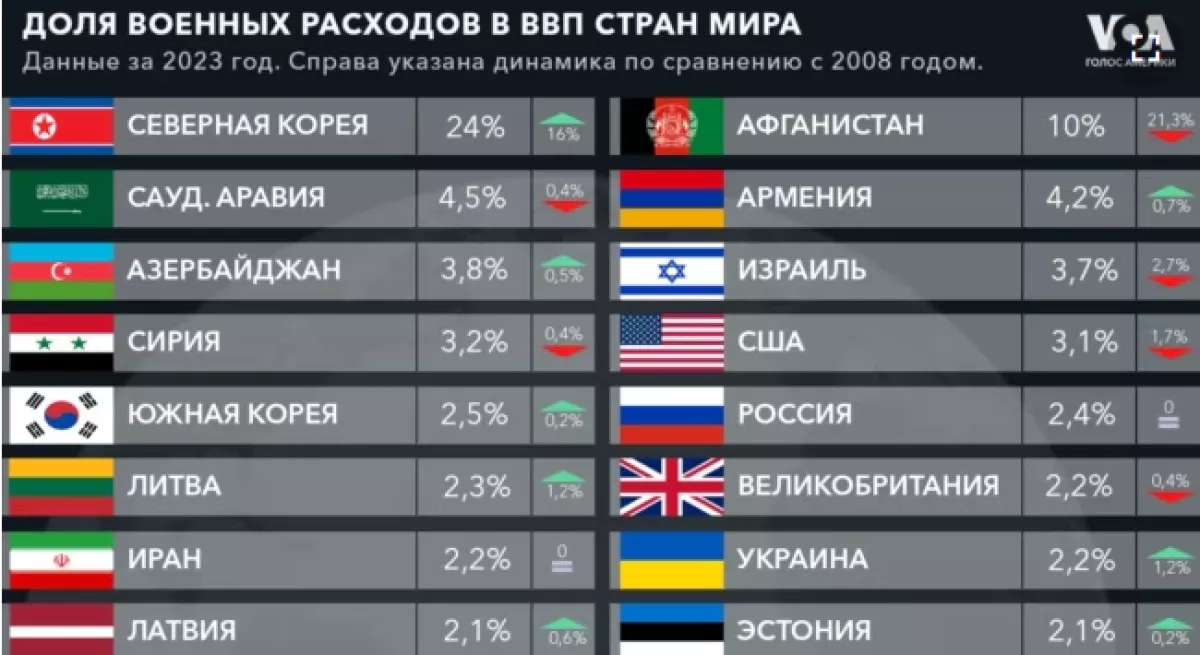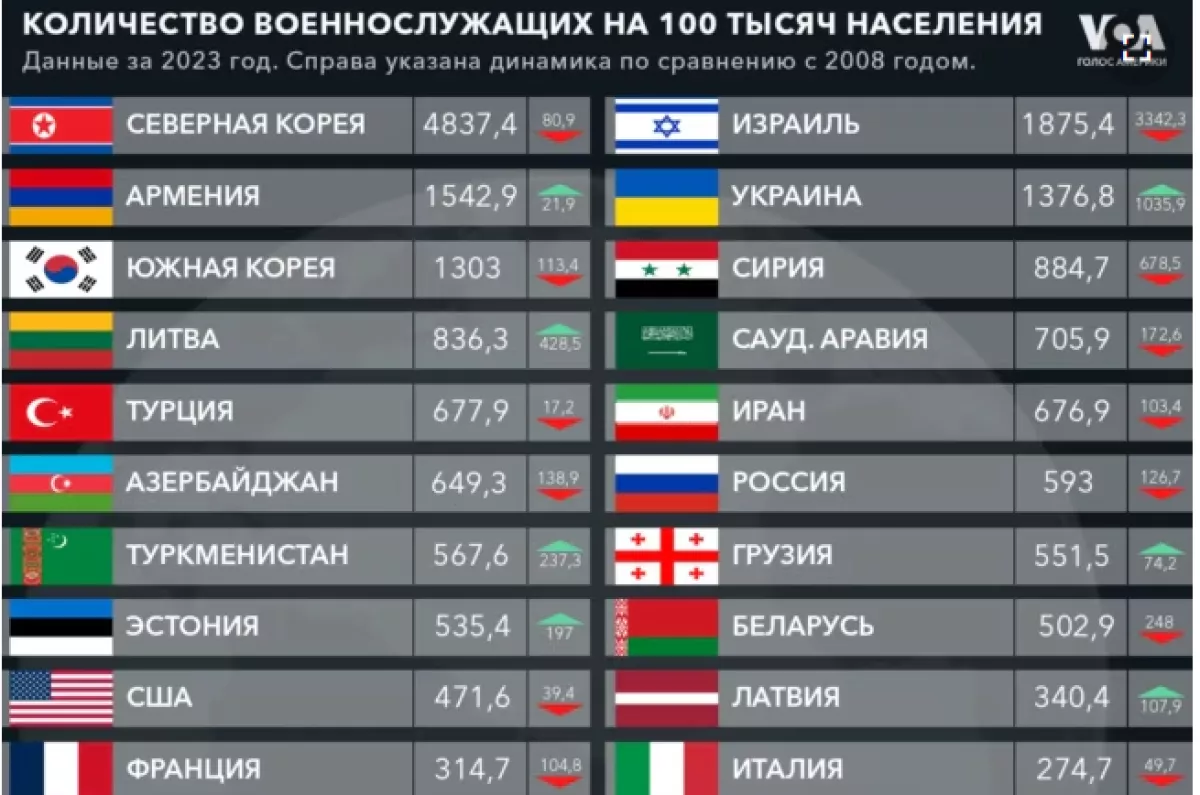IEP report highlights militarization trends in Armenia Amidst global conflicts
A new report titled “Contemporary Trends in Militarisation” by the Australian Institute for Economics and Peace (IEP) reveals a concerning increase in military expenditures and their proportion in national GDP.
The report indicates that there are currently 59 military conflicts worldwide, the highest number since World War II, with 92 countries expected to engage in armed conflicts beyond their borders in 2024, Caliber.Az reports per foreign media.
The report identifies several key trends, including rising military expenditures coupled with a decline in their share of national GDP. Notably, the global military budget is currently about half of the peak levels seen during the Cold War.
Additionally, the report highlights a decrease in troop numbers, which IEP experts attribute to the military's increasing reliance on technological innovation. This trend of reduced personnel and military expenditure relative to the economy has persisted for the last three decades.
In terms of military spending as a percentage of GDP, North Korea ranks highest, with at least 24 per cent of its GDP allocated to military needs, followed by Afghanistan (10%) and several Middle Eastern and African nations, such as Oman (5.9%), Algeria (4.8%), and Saudi Arabia (4.5%). Among former Soviet states, Armenia (4.2%) and Azerbaijan (3.8%) exhibit the highest military expenditure ratios.

Examining GDP figures, Azerbaijan's GDP last year was approximately $72 billion, while Armenia's was around $23 billion. Azerbaijan allocated $3.1 billion for military and national security expenditures, amounting to about $300 per capita for its population of over 10 million. In contrast, Armenia's military expenditures reached $1.3 billion for a population of less than three million, translating to $433 per capita.

The report also highlights Armenia's significant number of servicemen per 100,000 inhabitants, ranking among the highest globally.
Eritrea leads with 5,476 military personnel per 100,000, followed by North Korea (4,837), Israel (1,875), and Armenia (1,542). In comparison, Azerbaijan has 649 servicemen per 100,000 inhabitants.
The situation in Armenia is described as anything but peaceful. Azerbaijani President Ilham Aliyev addressed this issue in a speech to the seventh convocation of the Milli Majlis, stating, “Revengeful forces are raising their head in Armenia. These are not only marginal political elements. Today's Armenian government lives with these ideas and fantasies as well. They do not want to come to terms with the results of the Second Karabakh War and the anti-terror operation. Although they are saying one thing, their work, policies and steps create a completely opposite picture.”
By Vafa Guliyeva








